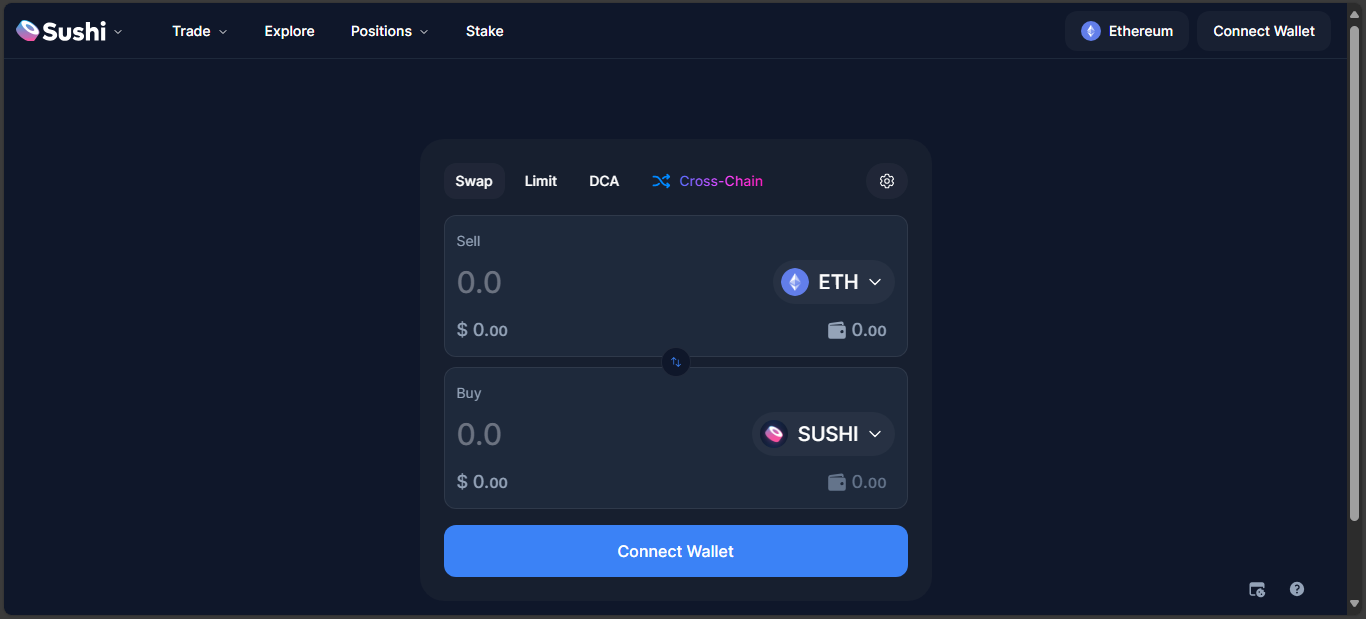SushiSwap on Arbitrum – Exchange Review

1. SushiSwap scales to Arbitrum – why it counts
SushiSwap on Arbitrum is not a novelty – it’s SushiSwap bringing its full DeFi arsenal onto a faster, cheaper layer. AMM swaps, BentoBox vaults, Kashi lending, token farms and governance – all wrapped in low-gas Arbitrum access. DeFi power without Ethereum’s toll.
2. What you get – Sushi features on Arbitrum
Sushi’s DeFi tools move to L2 seamlessly:
- Permissionless token swaps with reduced gas costs.
- Liquidity pools feed BentoBox, Kashi and MasterChef, now with Arbitrum efficiency.
- Farms and staking remain – earn SUSHI or xSUSHI on new chain volume.
- Governance stays intact – vote via SUSHI, engage with Sushi DAO, now on Arbitrum.
Fx-like depth – same DeFi tools, faster and cheaper.
3. Where users benefit – and still hesitate
Why traders stay:
- Significantly lower fees and faster blocks than Ethereum.
- All Sushi features available, without ETH-level congestion.
- Seamless wallet experience if you already use Arbitrum.
Yet:
- Liquidity and volume often trail Ethereum or Polygon versions – slippage and thin books show up.
- Cross-chain bridging adds steps – not as instant as native Arbitrum liquidity pools.
- New risk surface: smart contract migration from Ethereum to Arbitrum introduces subtle security gaps.
4. Sushi-Arbitrum’s role in DeFi landscape
Think of it as a bridge: Ethereum-grade features, Layer-2 speed. It matches SushiSwap’s full DeFi design with Arbitrum’s performance – trading, yield, governance, all under one roof. Best part – one wallet, many chains; toggle your DeFi mode.
5. Strengths vs Limitations
Strengths:
- Fast, low-cost trading atop Sushi’s ecosystem.
- Full suite of tools – swaps, farming, lending, governance – intact.
- Arbitrum’s UX and segmentation make DeFi smoother.
Weaknesses:
- Trade volume and liquidity still smaller than mainnet counterparts.
- Slightly more complexity – bridging, chain toggling, and contract security nuances.
- Still layered – any L2 depends on security of its yet-uneven infrastructure.
6. Lessons from SushiSwap Arbitrum
- Layer-2 is where DeFi meets practicality – speed without stripping features.
- Ecosystem consistency matters – full feature parity builds trust among users.
- But migrating smart contracts demands awareness – different environments carry hidden risks.
7. Final verdict
SushiSwap on Arbitrum blends DeFi depth with L2 agility. Active DeFi users get nearly frictionless swaps, farming, lending and governance – minus Ethereum’s gas hang-ups.
If you’re mobile-savvy on Arbitrum, this is your DeFi toolkit. If you’re new to DeFi or volume-driven trades, traditional channels may feel more fluid. But for those already living L2, SushiSwap on Arbitrum nails the blend of speed, utility and entire feature stack – all in one place.
Disclaimer
“This content is for informational purposes only and does not constitute financial advice. Please do your own research before investing.”






